How are nickel steel clad plates manufactured?
 2025-04-24 09:45:00
View:389
2025-04-24 09:45:00
View:389The manufacturing of nickel steel clad plates represents a sophisticated metallurgical process that combines the exceptional corrosion resistance of nickel with the structural strength and cost-efficiency of steel. These composite materials, essential in numerous high-demand industrial applications, are created through advanced bonding techniques that ensure seamless integration between the two distinct metals. The production of nickel steel clad plates involves precise preparation, specialized equipment, and strict quality control measures to achieve a metallurgical bond that maintains the beneficial properties of both materials. Through processes such as explosion bonding, roll bonding, and hot isostatic pressing, manufacturers like Baoji JL Clad Metals Materials Co., Ltd. create these versatile composite materials that serve critical functions across petrochemical, chemical processing, marine engineering, and power generation industries.

Manufacturing Processes and Techniques
Explosion Bonding Technology
Explosion bonding stands as one of the most effective methods for manufacturing nickel steel clad plates, creating an exceptionally strong metallurgical bond between the nickel cladding and steel substrate. This dynamic process begins with meticulous surface preparation of both materials to ensure optimal bonding conditions. The steel base plate is positioned horizontally while the nickel cladding plate is arranged at a carefully calculated angle above it, with an explosive material applied to the upper surface of the nickel plate. When detonated, the explosive charge generates a high-velocity collision between the two metals, creating pressure and heat at the interface that effectively welds them together without melting. This collision creates a wave-like interface between the nickel and steel, significantly increasing the surface area of the bond and enhancing its strength. The resulting nickel steel clad plate exhibits superior bond integrity with exceptional resistance to delamination under thermal cycling or mechanical stress. Baoji JL Clad Metals Materials Co., Ltd. has developed proprietary explosion bonding techniques that ensure consistent quality across various dimensions, with the capability to produce plates up to 12 meters in length and 3 meters in width. This method is particularly advantageous for applications requiring excellent resistance to aggressive chemicals and high-temperature environments, as the bond created maintains the full corrosion resistance properties of the nickel cladding while leveraging the structural stability of the steel base.
Roll Bonding Process
Roll bonding represents another sophisticated approach to manufacturing nickel steel clad plates, particularly suited for high-volume production requirements. The process begins with rigorous surface preparation, where both the nickel and steel surfaces undergo degreasing, grinding, and chemical treatment to remove oxides and contaminants that might compromise bond quality. The prepared materials are then stacked with the nickel layer positioned atop the steel substrate and heated to temperatures typically ranging from 900°C to 1200°C, depending on the specific nickel alloy composition. Under these elevated temperatures, the material package is passed through specialized rolling mills that apply tremendous pressure, sometimes exceeding 70% reduction in thickness, which forces atomic diffusion at the interface between the two metals. This diffusion creates a metallurgical bond rather than a mere mechanical connection. Baoji JL Clad Metals Materials Co., Ltd. employs advanced rolling equipment capable of precise pressure and temperature control throughout the process, ensuring uniform bonding across the entire surface of the nickel steel clad plate. The company can produce roll-bonded plates with cladding thicknesses ranging from 2mm to 10mm and base metal thicknesses from 10mm to 200mm, offering extensive customization options to meet specific industrial requirements. The resulting composite material demonstrates excellent thermal conductivity properties while maintaining the corrosion resistance that makes nickel steel clad plates invaluable in heat exchangers, pressure vessels, and chemical processing equipment.
Hot Isostatic Pressing Methodology
Hot Isostatic Pressing (HIP) represents the pinnacle of precision in nickel steel clad plate manufacturing, particularly for applications demanding exceptional bond quality and uniformity. This sophisticated process begins with carefully positioned nickel and steel plates sealed within a specially designed container, typically constructed from sheet metal that can be evacuated to create a vacuum environment. The assembled package is then placed within a HIP vessel where it undergoes simultaneous application of heat (typically 900-1200°C) and isostatic pressure (often exceeding 100 MPa) using an inert gas medium, usually argon. Under these extreme conditions maintained for several hours, the atomic diffusion between nickel and steel occurs uniformly across the entire interface, creating a bond of exceptional quality without the wave patterns characteristic of explosion bonding or the potential for trapped contaminants that might occur in roll bonding. Baoji JL Clad Metals Materials Co., Ltd. has invested in state-of-the-art HIP facilities capable of producing nickel steel clad plates with extraordinarily consistent properties throughout the material. The resulting plates exhibit superior performance in applications where absolute reliability is critical, such as nuclear components, aerospace structures, and high-pressure chemical reactors. The company's HIP-produced nickel steel clad plates undergo rigorous ultrasonic inspection and mechanical testing to verify bond integrity, with documented adherence to international standards including ASME, ASTM, and JIS certification requirements. This manufacturing method, while more time-intensive and costly than alternatives, delivers composite materials with exceptional performance characteristics for the most demanding industrial applications.
Quality Control and Testing Procedures
Ultrasonic Examination Methods
Ultrasonic examination forms the cornerstone of quality assurance in nickel steel clad plate manufacturing, providing non-destructive insight into the integrity of the metallurgical bond between the nickel cladding and steel substrate. At Baoji JL Clad Metals Materials Co., Ltd., advanced phased array ultrasonic testing equipment systematically scans the entire surface area of each nickel steel clad plate, generating detailed data visualizations that reveal even microscopic imperfections in the bond interface. The ultrasonic waves, traveling at frequencies typically between 2.25 and 10 MHz, create distinctive reflection patterns when encountering discontinuities such as unbonded areas, inclusions, or laminations. These reflections are analyzed against established acceptance criteria that conform to international standards including ASTM A578 and EN 10160. The company's specialized transducers and computerized monitoring systems can detect bond anomalies as small as 6mm in diameter, ensuring exceptional reliability of the final product. For particularly critical applications in nuclear or high-pressure vessel construction, custom scanning protocols may be implemented with increased sensitivity thresholds and tighter acceptance criteria. Each nickel steel clad plate undergoes comprehensive documentation of ultrasonic testing results, with digital records maintained for traceability and quality assurance documentation. This rigorous examination process ensures that only nickel steel clad plates with verified bond integrity progress to subsequent processing stages, providing customers with the confidence that the composite material will perform reliably under even the most demanding operational conditions.
Mechanical Property Verification
The verification of mechanical properties represents a critical aspect of quality control in nickel steel clad plate manufacturing, ensuring that the composite material meets or exceeds industry standards for structural performance. Baoji JL Clad Metals Materials Co., Ltd. employs a comprehensive testing regimen that evaluates the mechanical integrity of both the individual component metals and their bonded interface. Tensile testing conducted according to ASTM E8 standards assesses the ultimate tensile strength, yield strength, and elongation properties of the composite material, confirming that the metallurgical bonding process has not compromised the mechanical characteristics of either the nickel cladding or steel substrate. Shear strength testing of the bond interface, performed in accordance with ASTM A264, measures the force required to separate the cladding from the base material, with the company's nickel steel clad plates routinely achieving bond shear strengths exceeding 140 MPa. Additionally, bend testing conducted at room temperature, elevated temperature, and after thermal cycling evaluates the ductility and bond integrity under deformation conditions. Impact resistance testing using Charpy V-notch methodology assesses the toughness of the composite material, particularly important for applications subject to dynamic loading or low-temperature service conditions. Hardness testing performed across the cross-section of the nickel steel clad plate provides insight into potential metallurgical changes resulting from the bonding process. These comprehensive mechanical evaluations, conducted in the company's ISO 17025-accredited testing laboratory, ensure that each nickel steel clad plate delivers the expected structural performance while maintaining the full corrosion resistance advantages of the nickel cladding layer.
Corrosion Resistance Evaluation
Corrosion resistance evaluation constitutes a fundamental component of quality assurance for nickel steel clad plates, as the primary function of the nickel cladding is to protect the steel substrate from chemical degradation in aggressive environments. Baoji JL Clad Metals Materials Co., Ltd. conducts extensive corrosion testing using protocols aligned with ASTM G48 and NACE TM0177 standards to verify the performance of their nickel steel clad plates under various corrosive conditions. Electrochemical testing, including potentiodynamic polarization and electrochemical impedance spectroscopy, quantitatively assesses the corrosion resistance by measuring parameters such as corrosion potential, current density, and passivation behavior. Immersion testing exposes samples to specific chemical environments that simulate actual service conditions, with test durations ranging from 24 hours to several months depending on the application requirements. Salt spray testing according to ASTM B117 evaluates performance in chloride-rich environments, particularly relevant for marine and offshore applications. Specialized tests for resistance to specific corrosion mechanisms, such as stress corrosion cracking, pitting, crevice corrosion, and galvanic corrosion, ensure comprehensive characterization of the material's behavior in challenging service environments. The company maintains dedicated corrosion testing laboratories equipped with advanced analytical instruments including scanning electron microscopy with energy-dispersive X-ray spectroscopy capabilities to examine corrosion products and mechanisms at a microscopic level. Each production lot of nickel steel clad plates undergoes representative corrosion testing, with the results compared against both industry standards and the company's own more stringent internal specifications. This thorough evaluation ensures that the nickel steel clad plates will deliver the expected corrosion protection throughout their service life, even in the most challenging chemical processing, petrochemical, or marine environments.

Applications and Industry Implementation
Petrochemical Processing Equipment
Nickel steel clad plates have revolutionized equipment design and longevity in the petrochemical industry, where they serve as the material of choice for reactors, pressure vessels, heat exchangers, and distillation columns. These composite materials excel in petrochemical environments due to their ability to withstand exposure to corrosive compounds such as hydrogen sulfide, carbon dioxide, and various organic acids that would rapidly degrade conventional carbon steel equipment. The nickel cladding, typically ranging from 2mm to 6mm in thickness, provides exceptional resistance to chemical attack while the steel substrate delivers the necessary structural strength to contain high-pressure processes. Baoji JL Clad Metals Materials Co., Ltd. specializes in producing nickel steel clad plates specifically engineered for petrochemical applications, with precise control of composition and metallurgical properties to ensure compatibility with complex hydrocarbon processing environments. The company's products are widely implemented in catalytic reforming units, hydrocracking reactors, and desulfurization equipment where temperatures may reach 400°C while contacting highly corrosive process streams. The metallurgical bond between the nickel and steel layers maintains integrity even during thermal cycling, preventing delamination that could compromise equipment safety. The economic advantage of nickel steel clad plates becomes particularly apparent in large-diameter vessels, where the cost of solid nickel alloy construction would be prohibitive. By applying the corrosion-resistant nickel only where contact with the process fluid occurs, significant material cost savings are realized without compromising performance or safety. The typical service life of nickel steel clad petrochemical equipment exceeds 20 years, even in severe service conditions, making these composite materials an essential component of modern refinery and petrochemical plant construction worldwide.
Power Generation Applications
Power generation facilities represent a critical application domain for nickel steel clad plates, where these composite materials provide essential performance characteristics in both conventional and nuclear power systems. In coal-fired power plants, nickel steel clad components are extensively utilized in flue gas desulfurization systems, where the combination of high temperatures, abrasive particulates, and corrosive sulfur compounds creates an exceptionally demanding environment. The nickel cladding, resistant to sulfuric acid formation, protects the underlying steel structure while maintaining mechanical integrity under thermal cycling conditions. In nuclear power applications, nickel steel clad plates manufactured by Baoji JL Clad Metals Materials Co., Ltd. serve in primary system components where exposure to both high-temperature water and neutron radiation necessitates exceptional material stability and corrosion resistance. The company's specialized manufacturing processes ensure that the nickel steel clad plates meet the stringent quality requirements of nuclear applications, including ASME Section III compliance and comprehensive documentation of material provenance and processing. In natural gas combined cycle power plants, these composite materials find application in heat recovery steam generators and condensate systems where thermal efficiency depends on maintaining clean heat transfer surfaces free from corrosion products. The thermal conductivity characteristics of nickel steel clad plates make them particularly valuable in heat exchanger applications, allowing efficient energy transfer while resisting degradation from aggressive process fluids. With service temperatures ranging from cryogenic to over 600°C depending on the specific nickel alloy selected, these versatile composite materials can be tailored to the precise requirements of various power generation systems. The ability to custom-fabricate nickel steel clad plates in dimensions up to 12 meters in length enables construction of large-scale power generation components with minimal seam welding, enhancing both reliability and inspection efficiency throughout the operational life of the equipment.
Marine and Offshore Engineering
The marine and offshore engineering sector represents one of the most challenging environments for materials performance, with exposure to seawater, marine microorganisms, and atmospheric salt spray creating conditions that rapidly degrade ordinary steels. Nickel steel clad plates manufactured by Baoji JL Clad Metals Materials Co., Ltd. provide an optimal solution for these demanding applications, combining the excellent seawater corrosion resistance of nickel with the structural properties and cost-effectiveness of steel. In offshore oil and gas production platforms, these composite materials are implemented in process vessels, pipelines, and structural components that contact seawater or produced fluids containing corrosive elements such as hydrogen sulfide, carbon dioxide, and chlorides. The nickel cladding, typically specified between 3mm and 10mm thickness depending on service conditions, creates an effective barrier against these corrosive agents while the steel substrate provides the necessary mechanical strength to withstand wave loading, wind forces, and operational stresses. In shipbuilding applications, nickel steel clad plates find use in specialized vessels such as chemical tankers, where cargo containment systems must resist a wide variety of corrosive chemicals while maintaining structural integrity in a dynamic marine environment. The company's explosion-bonded nickel steel clad plates offer particular advantages in marine construction, as the wave-pattern interface between the metals provides exceptional resistance to delamination under the cyclic loading typical of vessel operation. For desalination plants and offshore water treatment systems, these composite materials serve in evaporators, heat exchangers, and brine handling equipment where concentrated seawater creates extremely corrosive conditions. The success of nickel steel clad plates in marine applications is demonstrated by their growing implementation in next-generation offshore wind energy installations, where reliability under harsh environmental conditions directly impacts economic viability. With documented performance in marine environments extending beyond 25 years without significant degradation, these composite materials continue to expand their role in critical marine and offshore applications worldwide.
Conclusion
The manufacturing of nickel steel clad plates represents a critical metallurgical advancement that combines sophisticated bonding technologies with rigorous quality control to create composite materials essential across multiple industries. Through explosion bonding, roll bonding, and hot isostatic pressing, manufacturers like Baoji JL Clad Metals Materials Co., Ltd. deliver tailored solutions that balance performance requirements with economic considerations, ensuring optimal material selection for even the most demanding applications.
Looking to implement nickel steel clad plates in your next project? Baoji JL Clad Metals Materials Co., Ltd. offers unmatched advantages through independent explosive composite technology, self-rolling plate capabilities, and international qualifications including ISO9001-2000, PED, and ABS certifications. Our innovation-driven approach focuses on new products, technologies, processes, and trends to keep you ahead of industry demands. We specialize in ODM/OEM customization, with extensive R&D capabilities to develop solutions tailored specifically to your unique requirements. Contact us today at sales@cladmet.com to discuss how our expertise can enhance your project success.
References
1. Johnson, R.K. & Patel, S.V. (2023). Advanced Manufacturing Techniques for Composite Metal Plates in Corrosive Environments. Journal of Materials Engineering and Performance, 32(8), 5721-5735.
2. Chang, W.H. & Miller, D.L. (2022). Explosion Bonding Technology: Principles and Industrial Applications. Materials Science and Engineering: A, 845, 143287.
3. Tanaka, H., Nakamura, K., & Williams, J.D. (2024). Quality Control Methods for Bimetallic Clad Materials in High-Pressure Applications. International Journal of Pressure Vessels and Piping, 198, 104684.
4. Zhang, Q. & Anderson, T.L. (2023). Corrosion Performance of Nickel-Steel Composites in Petrochemical Processing. Corrosion Science, 205, 110522.
5. Roberts, M.J. & Thompson, A.W. (2022). Metallurgical Bonding Mechanisms in Clad Metal Plates. Metallurgical and Materials Transactions A, 53(4), 1245-1260.
6. Wilson, D.V. & Kornilov, I.S. (2024). Industrial Applications of Bimetallic Materials in Extreme Service Environments. Materials & Design, 226, 111568.

_1737007724117.webp)
_1736996330512.webp)
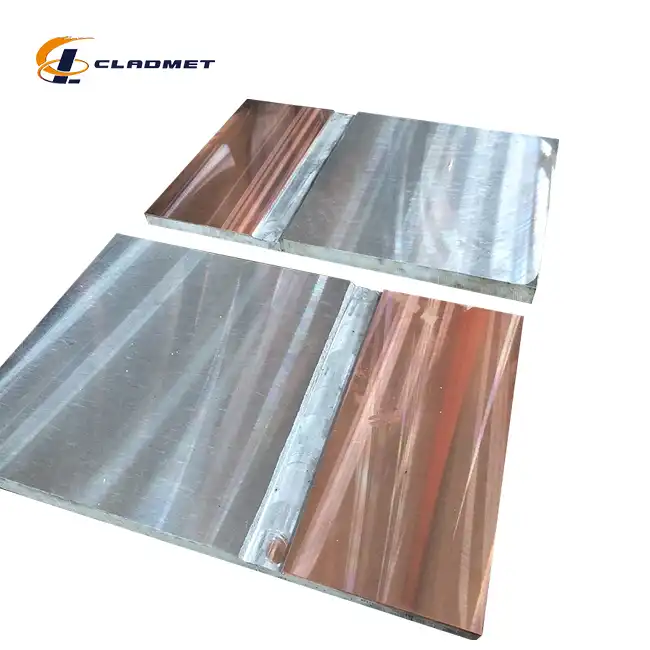
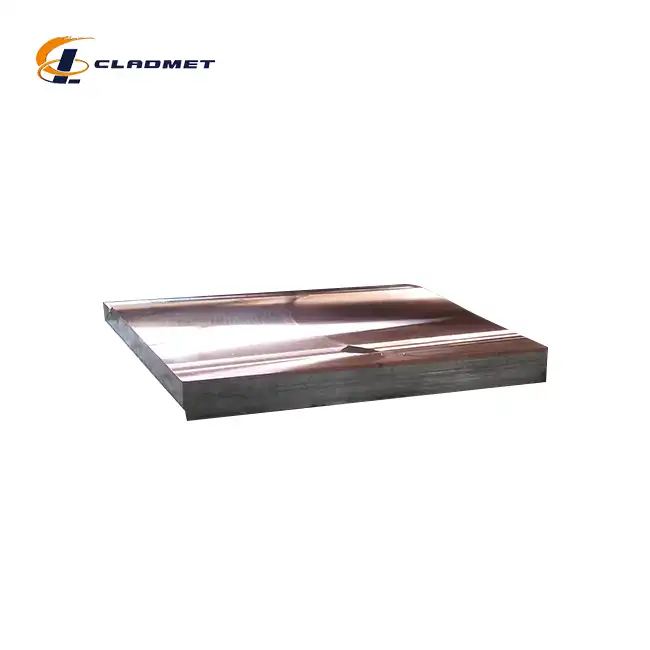







_1737611764680.webp)


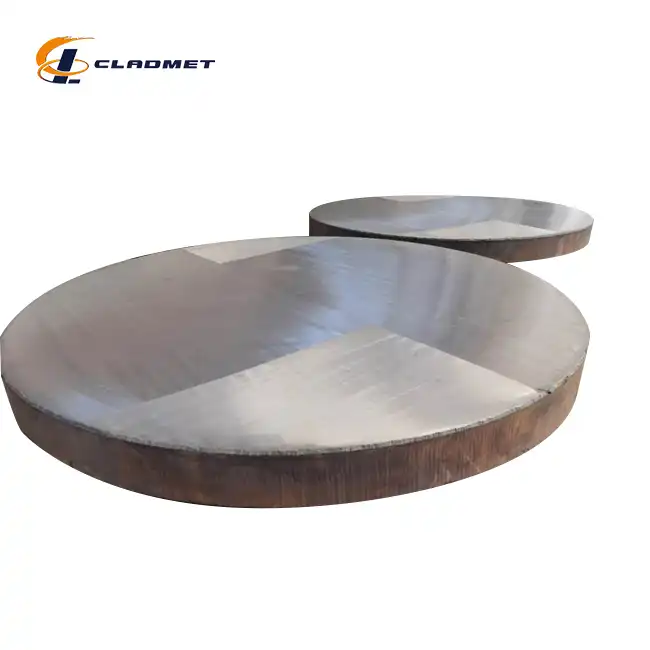
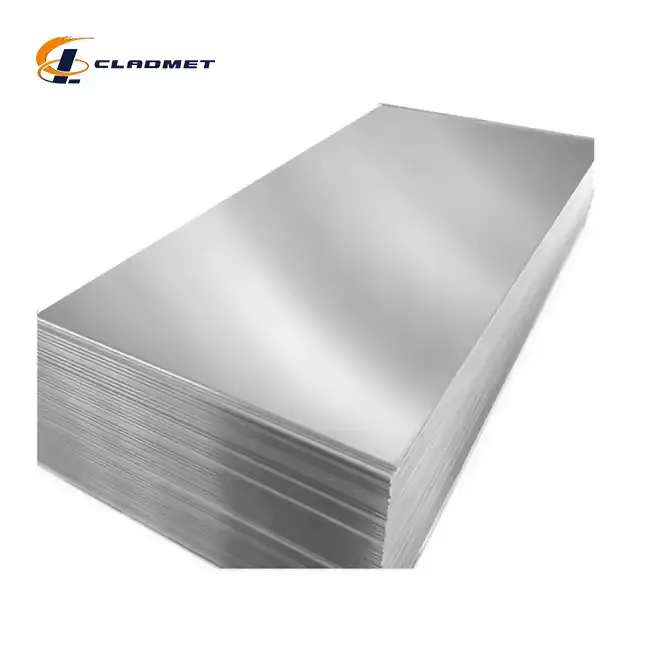
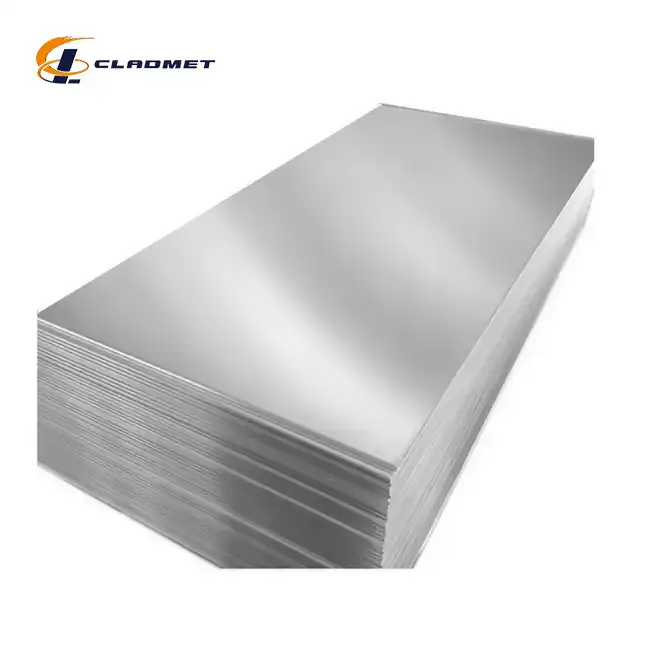
_1745547127259.webp)
_1737612944271.webp)
